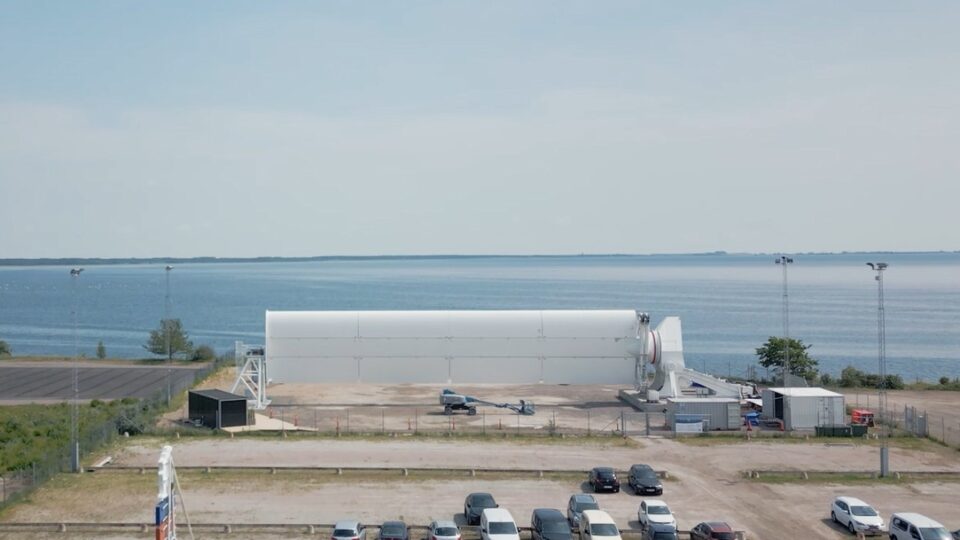While sailors constantly need to adjust the sail, the Oceanbird Wings will automatically trim themselves in an optimal position. To achieve that, we need a reliable wing sail control system and therefore Oceanbird and KTH Royal Institute of Technology are performing extensive tests in the KTH L2000 wind tunnel.
The neon threads are dancing as lively as the audience on the ABBA Voyage dance floor. And just like DJ:s, Antonia Hillenbrand and Ulysse Dhomé have deliberately pushed them over the edge. With small adjustments on the rotation of the wing sail, the threads calm down and are once again aligned with the wing.
“When the threads are moving around, it means that the flow is not attached. To get the largest lift force from the wind, we need to trim the wings in relation to the incoming flow so that they are as close as possible to the edge of where the flow is no longer attached and it stalls, but not crossing over it” says Antonia Hillenbrand, Development Engineer at Oceanbird.

The phenomenon called stall hysteresis has the effect that once the angle of attack is too large for the flow to be attached, the generated force is decreased drastically and the wing needs to be rotated back a lot more for building up a larger force again.
Collaboration to get better control
In a collaboration between Oceanbird and KTH Royal Institute of Technology, with assistance from RISE (former SSPA), we have been able to do extensive tests in the KTH L2000 wind tunnel. While the previous wind tunnel test has focused on the interaction between the wing sails, this test series is about finding the best way of trimming it in all possible configurations and the aerodynamics around stall hysteresis. It is the first wind tunnel test with the new two-segment wing design which optimizes the performance by creating camber.
 “From my point of view, the most important will be tests for the control algorithm development. We need to understand the physics behind what’s happening on these wings a bit better, so we can control them in the best possible way” says Ulysse Dhomé, PhD student at the Centre for Naval Architecture at KTH.
“From my point of view, the most important will be tests for the control algorithm development. We need to understand the physics behind what’s happening on these wings a bit better, so we can control them in the best possible way” says Ulysse Dhomé, PhD student at the Centre for Naval Architecture at KTH.
“We are excited to continue to explore new research areas and make use of this fantastic wind tunnel that recently became available for us”, says Jakob Kuttenkeuler, professor at KTH Centre of Naval architecture.

Sensitive even to small changes
Oceanbird and KTH have gathered a lot of interesting results from the first test round.
“The new wind tunnel tests have already contributed to the knowledge of how the flow on our wing looks like especially around stall. We also learnt how sensitive aerodynamics are to small changes in the environment, especially on the small scale of the wind tunnel model. But also in full scale, changes in temperature and humidity will affect the aerodynamics, which can of course mean a lot for a long route around the world” says Antonia Hillenbrand.
“Crazy physics” in the wind tunnel
After some adjustments to the 1-meter-high model of the wing sail, she and Ulysse are going back into the tunnel in March 2023. The second test period is for validating the test setup and reducing uncertainties in the data. For this test round, the colorful threads have been removed.
“We got important knowledge from the threads, they are a very good visualisation for example of where the flow detached first on the wing. The air flow is super sensitive to tiny changes, so foreseeing the disturbance of the tufts, we removed them for the next tests. It is some crazy flow physics happening around the wing, the next tests will be very interesting!” says Antonia Hillenbrand.




